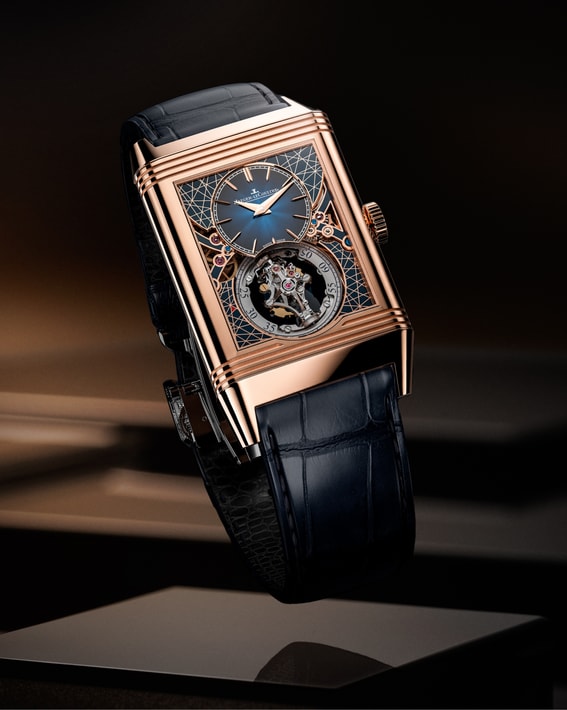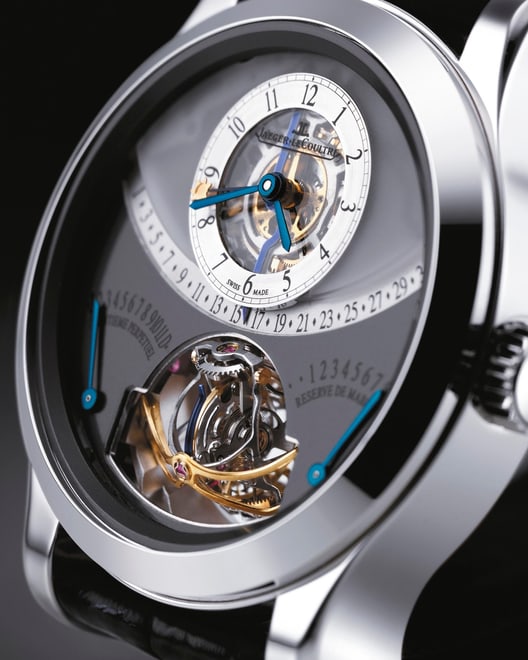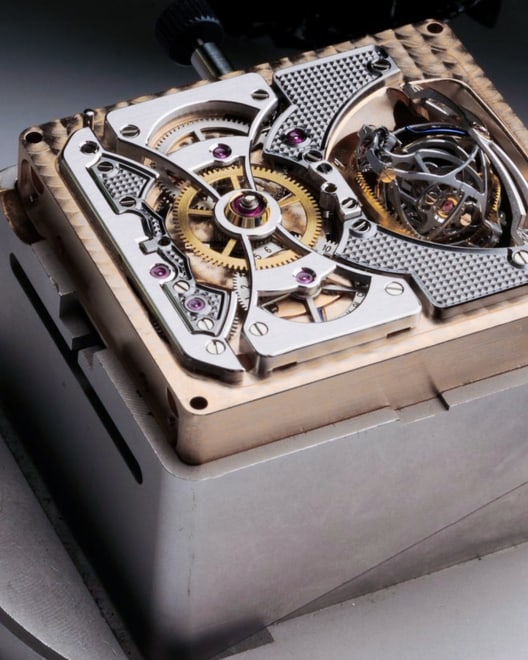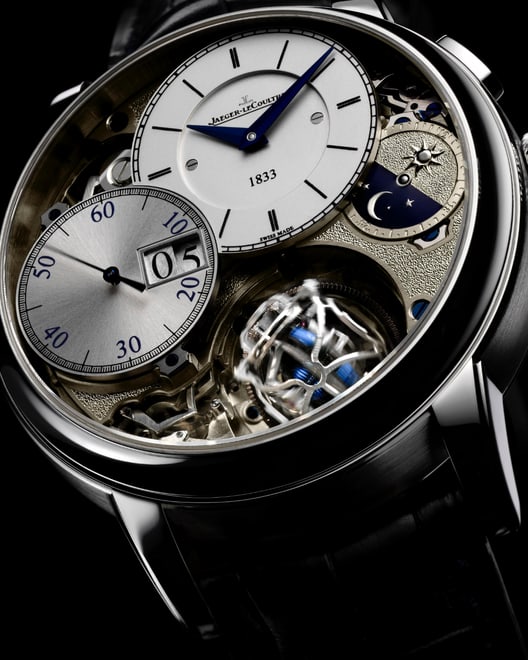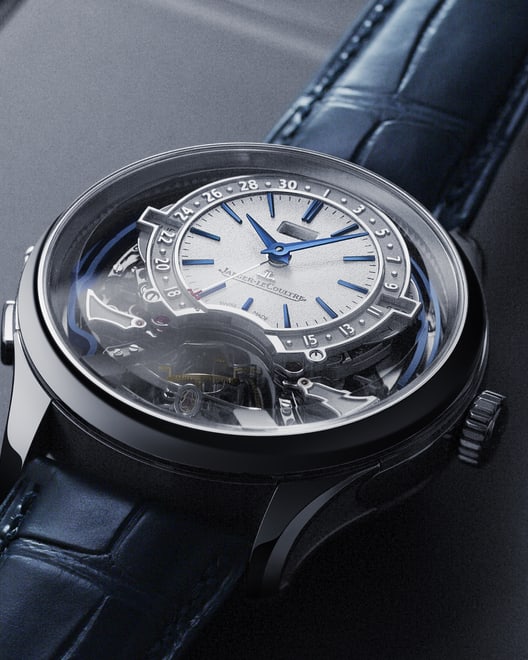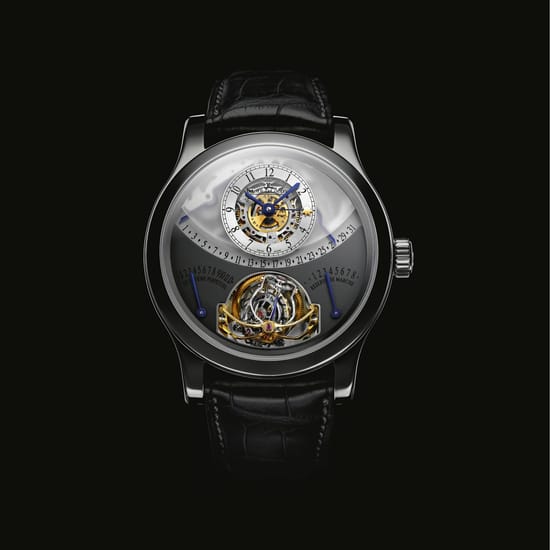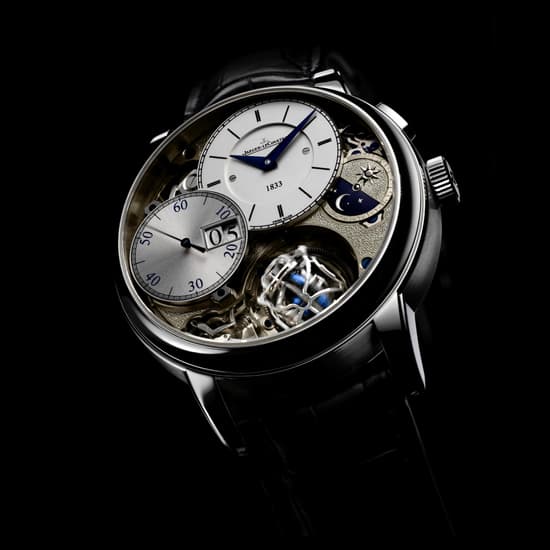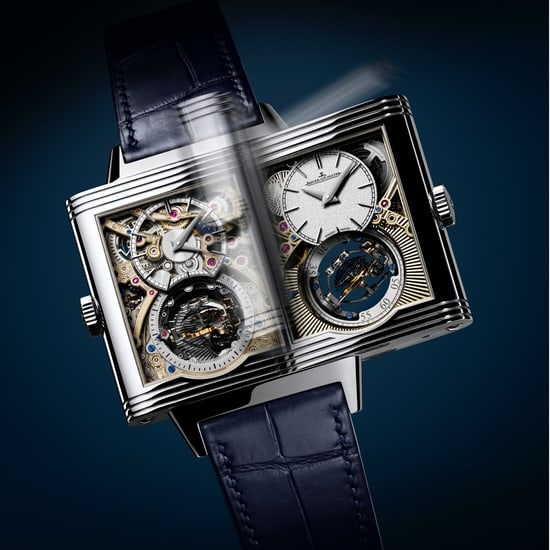COMPLICATION
TOURBILLON WATCH
The Earth’s gravity can have a negative effect on the precision of a watch. Since the end of the 18th century, the tourbillon watch mechanism has enabled watchmakers to eliminate these effects, leading to watches with increasing precision. This complication puts an end to inaccuracies caused by positional errors during operation.
With a tourbillon, the escapement and balance wheel are mounted in a rotating cage, cancelling out gravitational effects when the luxury watch remains stationary in certain positions. By rotating the entire complication continuously — usually at the rate of one rotation per minute — the tourbillon eliminates positional errors and guarantees the precision of the watch.
THE CALIBRE TOURBILLON 170
In 1946, Jaeger-LeCoultre presents its first tourbillon pocket watch equipped with Calibre 170. Produced in a limited edition of 26, the tourbillon movement of the Jaeger-LeCoultre Calibre 170 is one of the most precise of its era. From then on, the tourbillon watch reached new heights, in particular when it made its wristwatch debut in 1993.
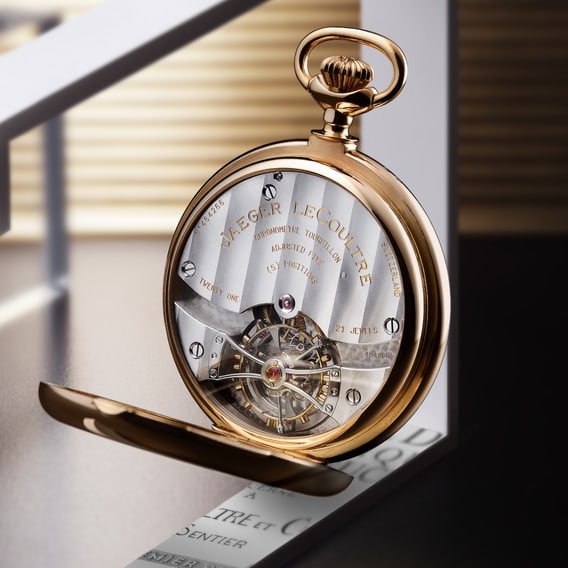
HERITAGE
FIRST GYROTOURBILLON WATCH
In 2004, having mastered the complication of the tourbillon watch, Jaeger-LeCoultre’s watchmakers set themselves the challenge of creating a device capable of resolving errors in the positioning of the balance and escapement by rotating them on two planes in all possible positions, thus giving birth to the multi-axis tourbillon watch: the gyrotourbillon. By significantly optimising the chronometric performance of the watches it equips, the fascinating Gyrotourbillon revolutionises the prior practices and customs at Jaeger-LeCoultre. It not only sets unprecedented precision standards, but also demonstrates the watchmaking excellence of La Grande Maison.
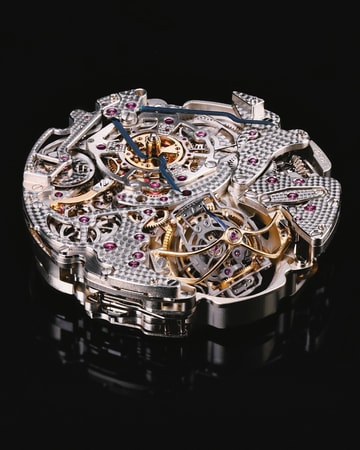
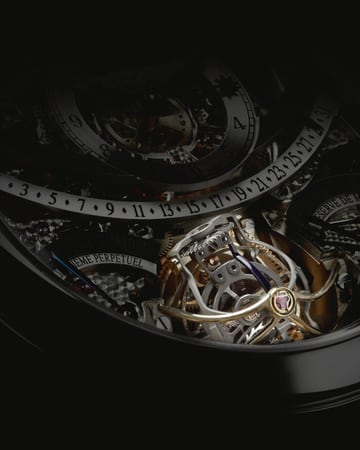
EXCEPTIONAL GYROTOURBILLON
By expanding and contracting, the Gyrotourbillon’s hairspring seemingly replicates the beating of the heart, bringing the tourbillon watch to life. To achieve such a feat, nothing can beat the passion and determination of the Maison’s finest watchmakers. It took many years of research and development to perfect a gyrotourbillon watch.
Made of ultra-light aluminium, the tourbillon carriage completes a full rotation in sixty seconds. Thanks to the Gyrotourbillon’s two inclined axes, the tourbillon watch never remains in a horizontal position, making it one of the most precise watchmaking mechanisms in the world.
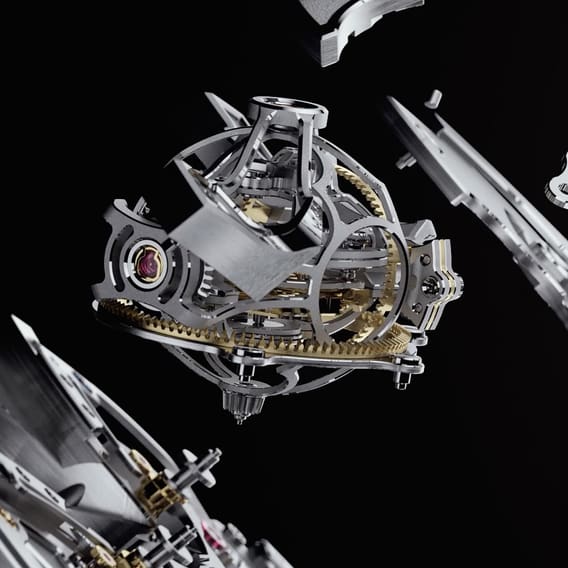
EXPERTISE
THE ART OF PRECISION
For Jaeger-LeCoultre, the quintessence of the art of watchmaking lies in the perfect balance between precision techniques and the necessary craftsmanship to apply them. All the Maison’s inventions have proved to be world firsts, including the first gear-cutting tools developed by Antoine LeCoultre, the Millionometer, created in 1844, and the first Grand Complication pocket watch from 1895. The Manufacture created the Geophysic Chronometer in 1958 and the Calibre 920 in 1967. In 1992, it launched the “1,000 hours control” with the Master Control watchmaking collection. Several noteworthy creations followed, in particular the Gyrotourbillon 1 watch in 2004, then the Duomètre watch in 2007.
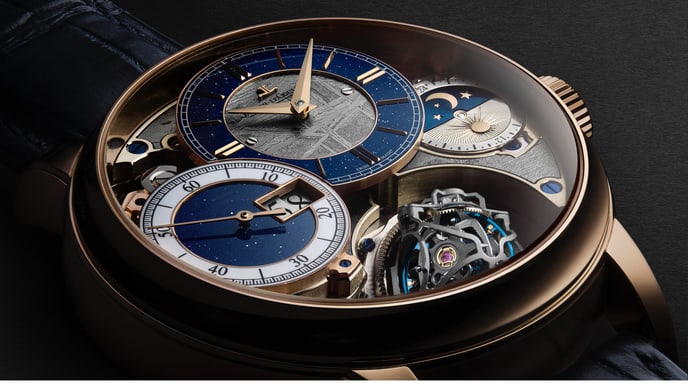
Chronometry competition
Precision tourbillon watches are one of Jaeger-LeCoultre’s favorites, as demonstrated by the Concours International de Chronométrie in 2009. That year, our Maison won two awards: first prize for the Master Tourbillon Calibre 978 and second prize for the Gyrotourbillon 2 Reverso Hybris Mechanica Calibre 174 watch.
At Jaeger-LeCoultre, the perfect balance between art and precision remains a relentless quest.
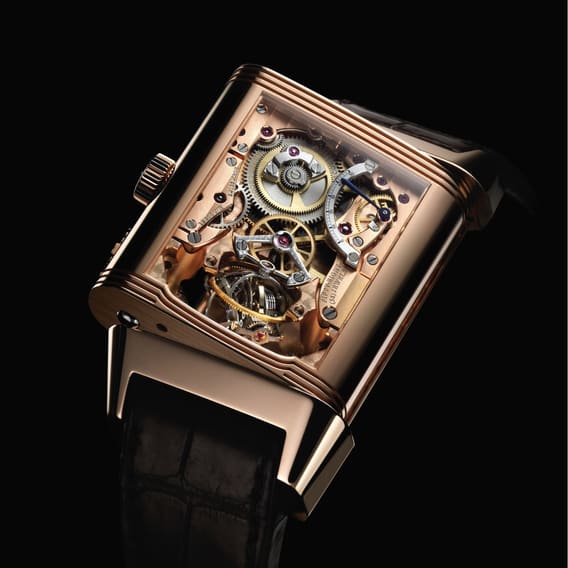
INVENTIONS
TOURBILLON WATCHES
Since the early 19th century, tourbillon watches have been a byword for precision. A master of this complication, Jaeger-LeCoultre has been offering watches featuring tourbillons since 1946. In this area, the creations of the Maison have recently gained in performance and precision thanks to three technical feats. The gyrotourbillon is the first of these. Its rotation is powered by an exterior traction, eliminating the need for the traditional tourbillon bridge. The second is called the “Sphérotourbillon”. A multi-axis mechanism inspired by the Earth’s rotational axis. The third feat is the orbital flying tourbillon, also known as the Cosmotourbillon, which frees itself from its fixed position to indicate the time, while completing a turn of the dial.
What's next?
The story continues
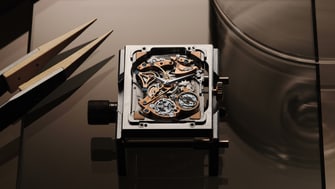
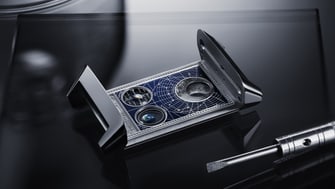
Newsletter
Subscribe to the Jaeger-LeCoultre newsletters to be the first to discover our new products, news and exclusive offers.
